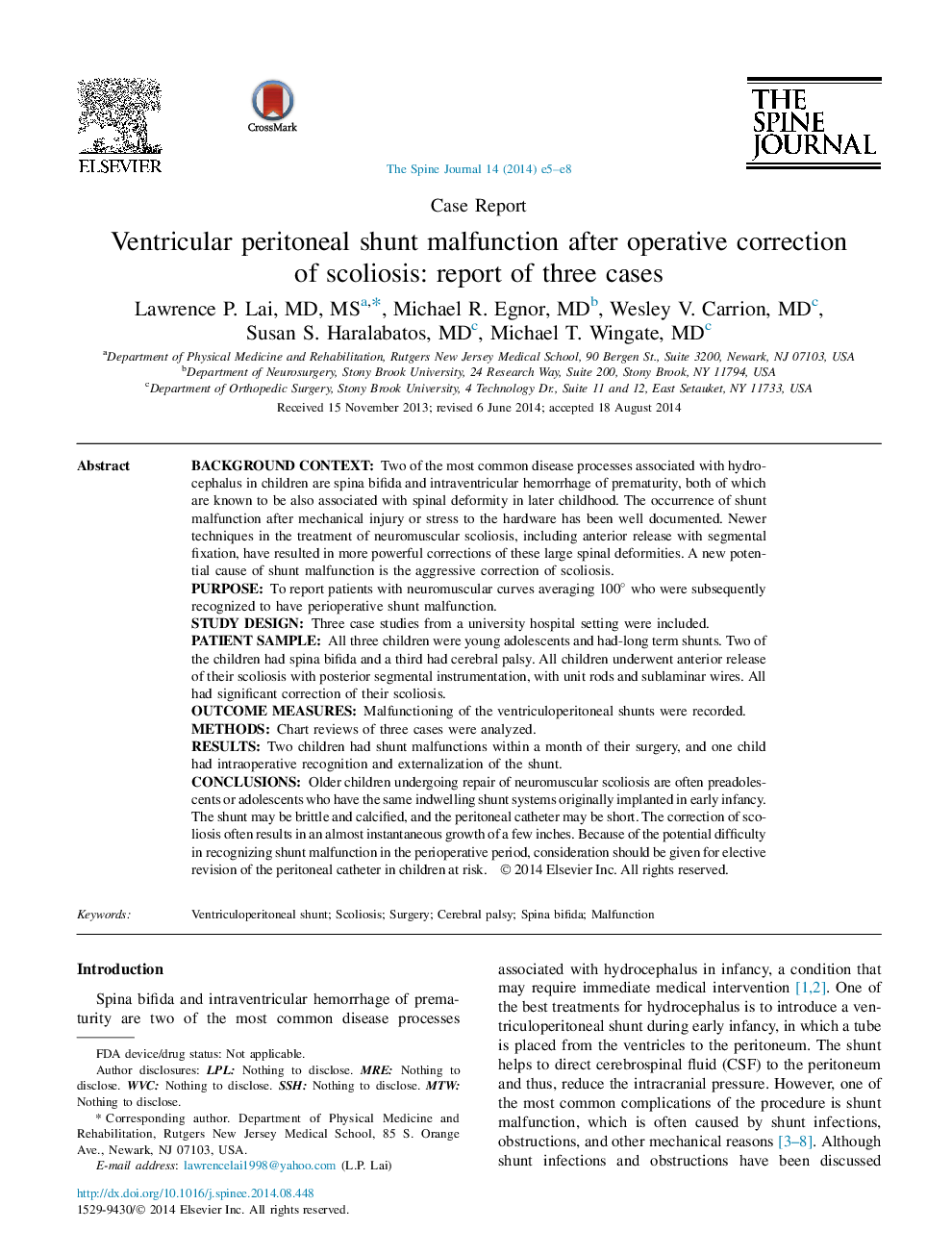| Article ID | Journal | Published Year | Pages | File Type |
|---|---|---|---|---|
| 6212759 | The Spine Journal | 2014 | 4 Pages |
Background contextTwo of the most common disease processes associated with hydrocephalus in children are spina bifida and intraventricular hemorrhage of prematurity, both of which are known to be also associated with spinal deformity in later childhood. The occurrence of shunt malfunction after mechanical injury or stress to the hardware has been well documented. Newer techniques in the treatment of neuromuscular scoliosis, including anterior release with segmental fixation, have resulted in more powerful corrections of these large spinal deformities. A new potential cause of shunt malfunction is the aggressive correction of scoliosis.PurposeTo report patients with neuromuscular curves averaging 100° who were subsequently recognized to have perioperative shunt malfunction.Study designThree case studies from a university hospital setting were included.Patient sampleAll three children were young adolescents and had-long term shunts. Two of the children had spina bifida and a third had cerebral palsy. All children underwent anterior release of their scoliosis with posterior segmental instrumentation, with unit rods and sublaminar wires. All had significant correction of their scoliosis.Outcome measuresMalfunctioning of the ventriculoperitoneal shunts were recorded.MethodsChart reviews of three cases were analyzed.ResultsTwo children had shunt malfunctions within a month of their surgery, and one child had intraoperative recognition and externalization of the shunt.ConclusionsOlder children undergoing repair of neuromuscular scoliosis are often preadolescents or adolescents who have the same indwelling shunt systems originally implanted in early infancy. The shunt may be brittle and calcified, and the peritoneal catheter may be short. The correction of scoliosis often results in an almost instantaneous growth of a few inches. Because of the potential difficulty in recognizing shunt malfunction in the perioperative period, consideration should be given for elective revision of the peritoneal catheter in children at risk.
